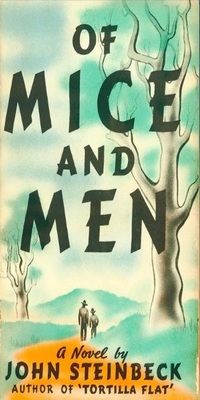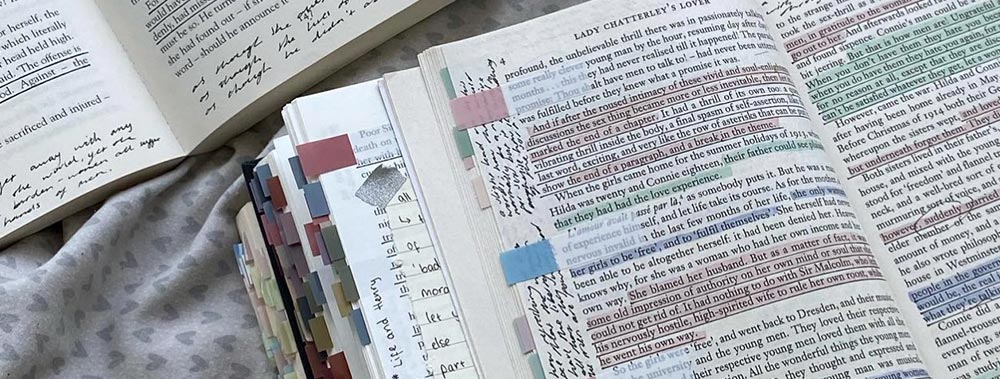Of Mice And Men Chapter 3 : Summary, Plot, Characters, Literary Analysis & More
“Of Mice and Men” is a classic novella written by John Steinbeck, first published in 1937. This compelling work is one of Steinbeck’s most celebrated literary achievements, offering a poignant exploration of the Great Depression era.
“Of Mice and Men” delves into the lives of two displaced ranch workers, George and Lennie, as they pursue the elusive American Dream during a time of economic hardship and social upheaval.
The novella delves into themes such as the fragility of human relationships, the struggle against societal prejudices, and the quest for a better life, set against the backdrop of the harsh realities of the Sacramento River valley.
In this review, we will focus exclusively on Chapter 3 of “Of Mice and Men,” examining its pivotal events and their profound impact on the characters and the overarching narrative.
Readers may also be interested in our “Of Mice and Men” summary (for a full book analysis) and our “Of Mice and Men” Chapter 1 summary.

"Of Mice and Men" delves into the lives of two displaced ranch workers, George and Lennie, as they pursue the elusive American Dream during a time of economic hardship and social upheaval.
Table of Contents
Summary The Plot Characters Key Themes Genres Language used Literary devices Summing upThe Plot
In Chapter 3 of “Of Mice and Men,” tension escalates as Lennie unintentionally grabs Curley’s hand, leading to a conflict.
George explains the consequences of Lennie’s actions, highlighting the danger he poses. Lennie asks George for reassurance, seeking solace in his guidance.
George tells Lennie about the ongoing feud with Curley, further emphasizing the need for caution.
This chapter underscores Lennie’s vulnerability and the challenges George faces in protecting him, setting the stage for the complex dynamics and conflicts that will shape their journey in the novella.
Characters
Chapter 3 of “Of Mice and Men” introduces several crucial characters who play pivotal roles in the unfolding narrative. Among them are:
Lennie
A gentle giant with immense physical strength but limited intellectual capacity. He unintentionally grabs Curley’s hand, triggering a series of events in this chapter.
George
Lennie’s loyal friend and caretaker. George explains the complexities of their situation and strives to protect Lennie from harm, navigating the challenges of their shared journey.
Curley
The antagonistic and aggressive son of the ranch owner, whose hand Lennie inadvertently grabs, sparks a conflict.
Whit
A ranch worker invites George to join in some activities, providing insight into the daily life and dynamics of the ranch.
Carlson
Another ranch worker plays a role in a significant event later in the novella when he insists on killing Candy’s old dog.
Key Themes
In Chapter 3 of “Of Mice and Men,” John Steinbeck continues to explore several enduring themes that resonate throughout the novella.
These themes shed light on the complex nature of human relationships and societal challenges in the backdrop of the Great Depression.
Isolation and Loneliness
The theme of isolation becomes more pronounced as characters like Lennie and Candy grapple with feelings of loneliness in a world where connections are fleeting. Lennie’s unintentional actions isolate him further, highlighting the pervasive loneliness that plagues the ranch workers.
Power and Vulnerability
The power dynamics on the ranch are evident as Curley, the boss’s son, wields his authority over the other workers. Lennie’s vulnerability and George’s protective instincts underscore the theme of power imbalance, where strength doesn’t always equate to control.
Dreams and Disillusionment
Chapter 3 delves into the dreams and aspirations of the characters, especially the dream of owning a piece of land, which serves as a beacon of hope amid harsh circumstances. However, the chapter also hints at the looming specter of disillusionment, as the characters’ dreams appear increasingly elusive.
Genres in Of Mice And Men Chapter 3
“Of Mice and Men” primarily falls within the genres of literary fiction, social realism, and tragedy, with Chapter 3 exemplifying these genres in various ways.
Literary Fiction
The novella, including Chapter 3, is a quintessential example of literary fiction, focusing on character development, emotional depth, and thematic exploration. Steinbeck’s nuanced portrayal of the character’s inner lives and struggles contributes to the literary quality of the work.
Social Realism
“Of Mice and Men” is a prime exemplar of social realism, as it offers a candid depiction of the hardships faced by itinerant workers during the Great Depression. The characters’ experiences on the ranch and their interactions reflect the stark realities of the time.
Tragedy
Tragedy is a prevalent genre element, especially as conflicts escalate in Chapter 3. The unfolding events, characterized by tension and inevitable outcomes, align with the tragic tradition, highlighting the characters’ vulnerability and the inescapable consequences of their actions.
Language used in Of Mice And Men Chapter 3
Steinbeck employs a concise and evocative writing style to vividly convey the atmosphere and emotions within the ranch setting. Steinbeck skillfully uses dialogue to capture the tension that ensues when Lennie grabs Curley’s hand, infusing the scene with palpable unease.
The author’s language subtly reflects the underlying conflicts and power dynamics, creating a richly textured narrative that immerses readers in the emotional complexities of the characters and the stark realities of their world.
Literary devices in Of Mice And Men Chapter 3
In Chapter 3 of “Of Mice and Men,” John Steinbeck employs several literary devices to enhance the narrative’s depth and impact. Notably, during the pivotal moment when Curley attacks Lennie, Steinbeck employs vivid imagery and foreshadowing to heighten the sense of impending conflict.
Additionally, the dialogue and characterization serve as powerful tools, revealing the characters’ motivations and complexities.
This chapter masterfully utilizes these literary devices to create tension, foreshadow future events, and delve deeper into the themes of power and vulnerability within the story.
Similes
In “Of Mice and Men,” John Steinbeck employs similes to vividly illustrate the characters’ experiences and emotions.
For instance, when Whit invites George to join the ranch workers, Steinbeck uses the simile to emphasize Whit’s friendliness, describing him as “as warm as the sun on a summer’s day.” This simile not only paints a welcoming picture of Whit but also contrasts the harshness of the ranch environment.
Another example can be seen when George asks Lennie a question. He speaks to Lennie “like Aunt Clara talked to him.”
This simile highlights George’s protective and nurturing role, paralleling it with the way Lennie’s deceased aunt cared for him. It enhances the reader’s understanding of their relationship and George’s responsibility towards Lennie.
Metaphors
John Steinbeck skillfully employs metaphors in “Of Mice and Men” to convey deeper meanings and enrich the narrative. Curley’s wife, often referred to as a “rat trap,” serves as a metaphor for the entrapment and disillusionment faced by women in the 1930s.
Her unfulfilled dreams and lonely existence are encapsulated in this metaphor, shedding light on the limited opportunities and societal constraints women faced during that era.
Additionally, when Carlson kills Candy’s dog, it symbolizes the harsh, unsentimental nature of life on the ranch, reflecting the idea that the weak are discarded when they are no longer deemed useful.
These metaphors contribute to the novel’s exploration of social and emotional themes, adding depth and complexity to the characters’ experiences.
Analogies
Chapter 3 of “Of Mice and Men” doesn’t prominently feature analogies. However, the escalating tension between characters like Curley and Lennie can be likened to a ticking time bomb, highlighting the imminent explosion of conflict due to their clashing personalities and desires.
This analogy helps readers anticipate the dramatic events that unfold, adding suspense and depth to the narrative.
Imagery
In Chapter 3, Steinbeck utilizes vivid imagery to immerse readers in the ranch environment and the characters’ emotions.
For instance, when Lennie cries, the imagery evokes a powerful sense of vulnerability, portraying Lennie as a child in distress amidst the harsh adult world. The image of George hiding reflects the theme of protection and concealment, emphasizing his role as Lennie’s guardian.
Symbolism
The characters’ actions and emotions in Chapter 3 hold symbolic significance. Lennie’s tears symbolize his emotional fragility and innocence, while George’s admission and remarks represent the burden of responsibility he carries for Lennie’s well-being.
The act of talking and sharing between characters symbolizes their need for connection in a lonely and isolated world. These symbolic elements enrich the narrative, reinforcing themes of vulnerability, friendship, and the human condition.
Hyperbole
Hyperbole, or deliberate exaggeration, is used subtly in Chapter 3 to emphasize the severity of certain situations.
When George admits that he’s been “foolish,” it underscores the enormity of the challenges he faces in protecting Lennie, creating a heightened sense of responsibility and danger.
Irony
Chapter 3 in “Of Mice and Men” contains situational irony, where events unfold in a way contrary to what is expected.
The warning signs and tensions between characters like Curley, Lennie, and George ironically foreshadow the tragic climax of the novella. This creates a sense of inevitability and dramatic irony, as readers can anticipate the devastating outcome.
Juxtaposition
Juxtaposition is subtly employed in Chapter 3 to highlight contrasts in character dynamics and emotions. The contrast between George’s protective instincts and Lennie’s childlike innocence underscores the theme of vulnerability.
Additionally, the juxtaposition of Carlson’s insistence on shooting Candy’s dog and the empathy shown by Slim and George highlights the varying attitudes towards compassion and cruelty in the ranch community, provoking thoughts about societal values.
Onomatopoeia
In Chapter 3 of “Of Mice and Men,” John Steinbeck employs onomatopoeic words to enhance the auditory dimensions of the narrative.
While the chapter doesn’t prominently feature onomatopoeia, the use of words like “bang” or “snap” in the novella as a whole adds sensory detail to the storytelling.
These words create a more vivid and immersive reading experience, allowing readers to hear the sounds of the ranch and the characters’ interactions in their minds.
The Use of Dialogue
Chapter 3 of “Of Mice and Men” employs dialogue to reveal character traits, underline themes, and build narrative tension. George’s conversations with Slim showcase his protective nature and the depth of his friendship with Lennie.
Lennie’s questions, especially when he asks George about their dream, emphasize his childlike innocence and longing for a better life.
The dialogue also underscores the theme of isolation and the difficulty of forming meaningful connections on the ranch. Through conversation, the characters’ emotions, motivations, and the challenges they face are vividly portrayed.
Parallelism
Chapter 3 doesn’t prominently feature instances of parallelism. However, throughout the novella, there’s a parallelism in the dreams and aspirations of the characters.
George and Lennie’s dream of owning a piece of land mirrors Candy’s desire to be a part of it, showcasing the common yearning for security and a sense of belonging.
This thematic parallelism contributes to the narrative’s cohesion and reinforces the overarching theme of the American Dream.
Rhetorical Devices
In Chapter 3 of “Of Mice and Men,” John Steinbeck employs rhetorical devices strategically for persuasive effect. For instance, George’s initiation of discussions about their dreams begins a persuasive narrative thread, aiming to convince both himself and Lennie of the possibility of a better future.
Slim’s storytelling to Curley serves as a rhetorical device to indirectly address and mitigate tensions on the ranch.
Additionally, Carlson’s insistence on shooting Candy’s dog is presented as a persuasive argument within the narrative, reflecting the harshness of ranch life and the lack of sentimentality. These devices enhance the novella’s thematic depth and character development.
Of Mice And Men Chapter 3 : FAQs
In this section of the “Of Mice and Men” Chapter 3 summary, we provide answers to common queries about this pivotal chapter, its themes, characters, and literary elements, enhancing your understanding of John Steinbeck’s classic novella.
What happened in chapter 3 of Of Mice and Men?
In Chapter 3 of “Of Mice and Men,” tensions escalate on the ranch. Curley, the boss’s son, becomes increasingly aggressive, which foreshadows conflict. The workers, including Lennie and George, engage in conversations about their dreams and aspirations.
What is the main conflict in Chapter 3 and how George explains it?
The main conflict in Chapter 3 revolves around the hostile atmosphere created by Curley’s aggression and his suspicion of his wife’s interactions with the ranch workers. George explains the potential danger of this conflict, emphasizing the need for Lennie to steer clear of trouble.
Why did Curley and Lennie fight in Chapter 3?
Curley and Lennie’s fight in Chapter 3 is sparked by Curley’s aggressive demeanor and his belief that Lennie is flirting with his wife. Lennie, who doesn’t understand the situation fully, becomes defensive, leading to a physical altercation.
What happens when Lennie grabs Curley’s hand in Chapter 3?
When Lennie grabs Curley’s hand in Chapter 3, it results in a brief but intense confrontation. Curley’s hand is injured, setting the stage for further conflict and tensions on the ranch, which ultimately contributes to the novella’s tragic climax.
Summing up: Of Mice And Men Chapter 3 : Summary, Plot & More
As you now know from this “Of Mice and Men” Chapter 3 summary, this section serves as a microcosm of the novella’s larger themes and character dynamics.
Through carefully crafted storytelling, John Steinbeck continues to illuminate the complex interplay of power and vulnerability, the desire for connection in a lonely world, and the harsh realities faced by itinerant workers during the Great Depression.
The chapter’s pivotal moments, such as Curley’s aggression and the discussions about dreams, foreshadow the tragic climax that will ultimately test the bond between George and Lennie.
Steinbeck’s vivid descriptions and authentic dialogue immerse readers in the harsh, unforgiving ranch environment, forging a deep emotional connection with the characters.
“Of Mice and Men” endures as a timeless work of literature, resonating with readers for its exploration of the human condition, the pursuit of dreams, and the enduring power of friendship.
Its impact and appeal lie in its ability to provoke thought, stir emotions, and remind us of the enduring struggles and aspirations that define the human experience.
Other Notable Works by John Steinbeck
If you are interested in “Of Mice and Men”, you may be interested in other works by John Steinbeck including:
- “The Grapes of Wrath” (1939): A Pulitzer Prize-winning novel that explores the plight of Dust Bowl migrants during the Great Depression, offering a powerful social commentary.
- “East of Eden” (1952): A sprawling family saga set in California’s Salinas Valley, delving into themes of good and evil, inheritance, and free will.
- “Cannery Row” (1945): A humorous and poignant depiction of life in a coastal California community during the 1930s, known for its memorable characters and slice-of-life storytelling.
- “The Pearl” (1947): A novella that tells the story of a poor pearl diver in Mexico who discovers a valuable pearl, exploring themes of wealth, greed, and human nature.
- “Travels with Charley” (1962): A non-fiction work where Steinbeck embarks on a cross-country road trip with his poodle, Charley, offering observations on American society and landscape.
These works showcase Steinbeck’s versatility as a writer and his ability to delve into the complexities of the human condition, making them worthwhile reads for those who appreciate his storytelling.







